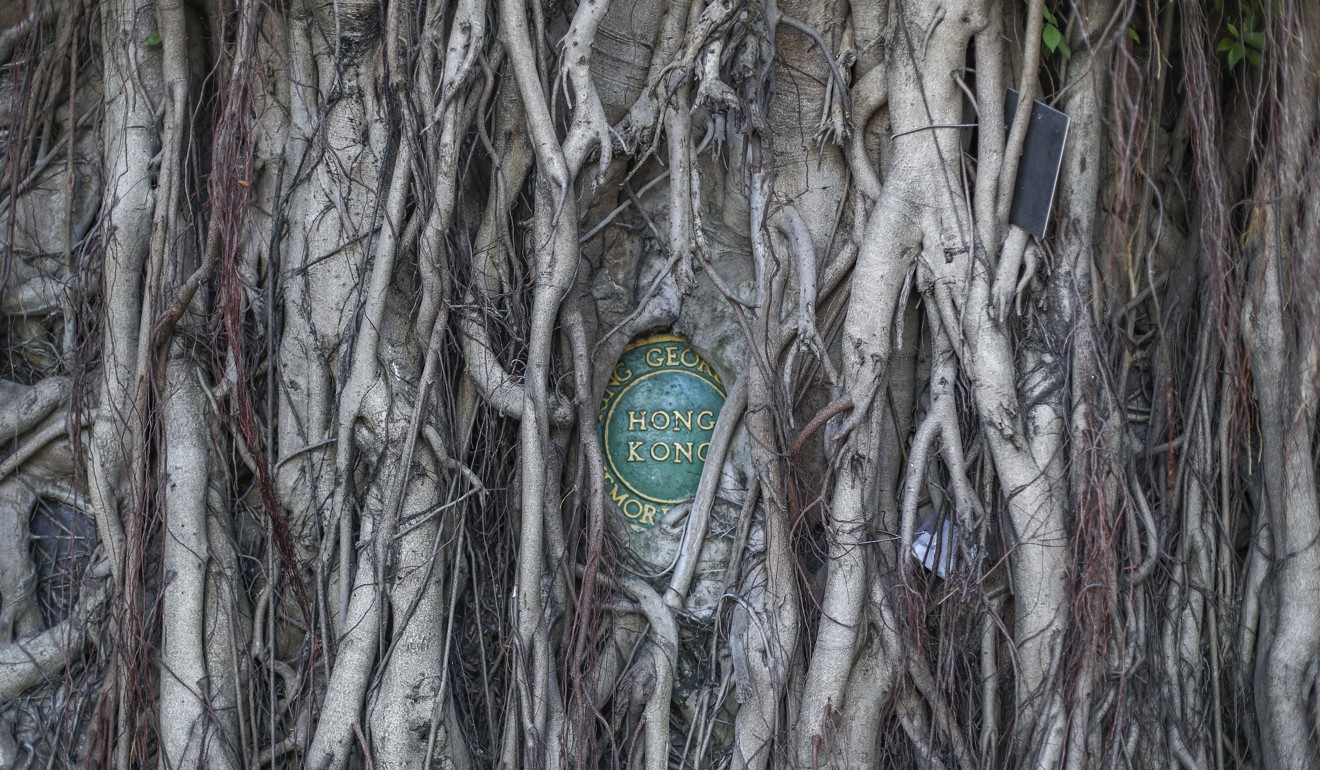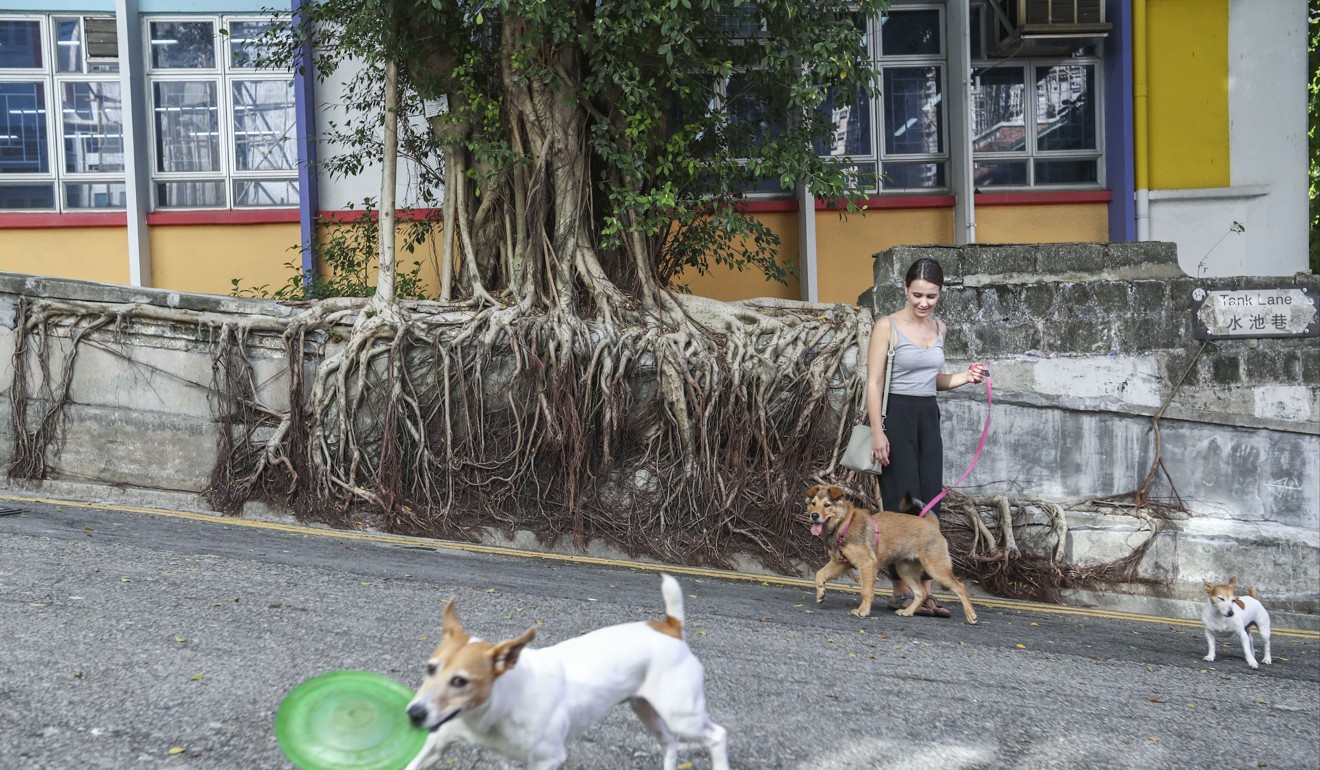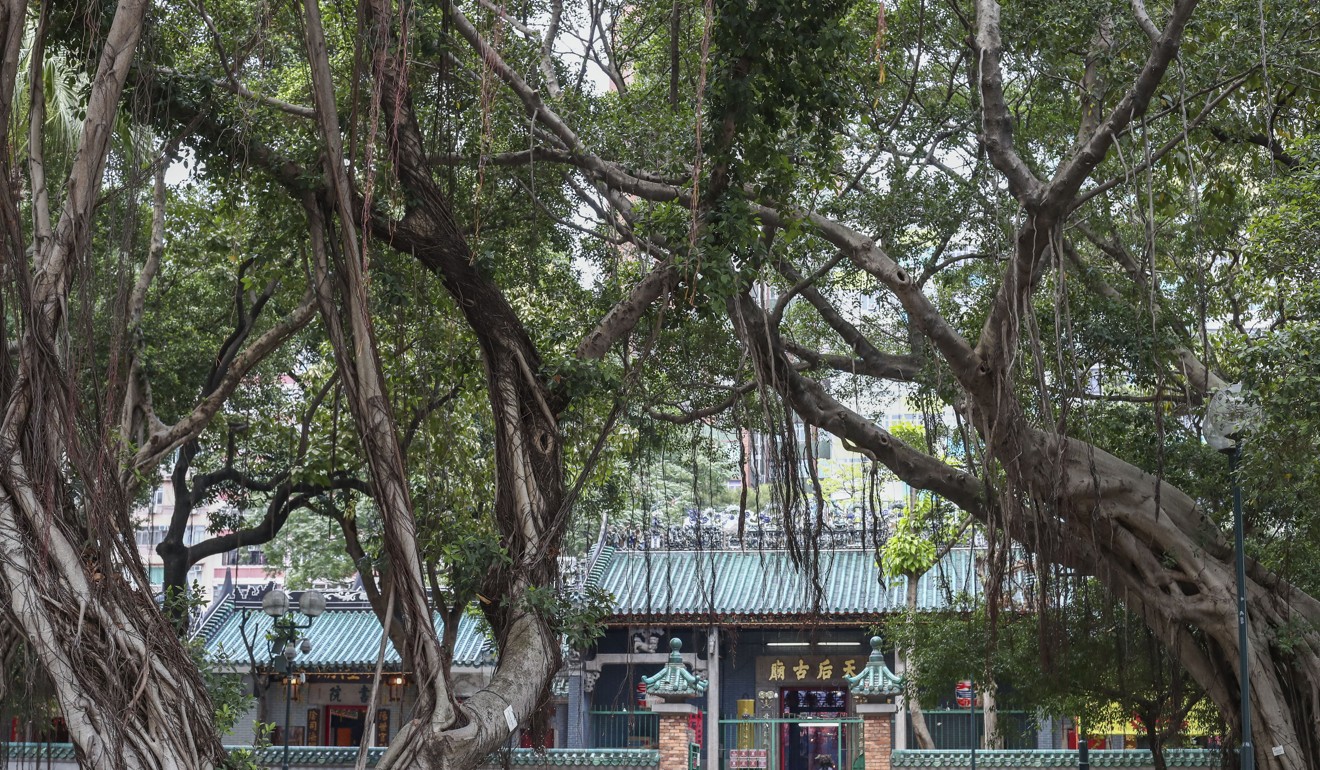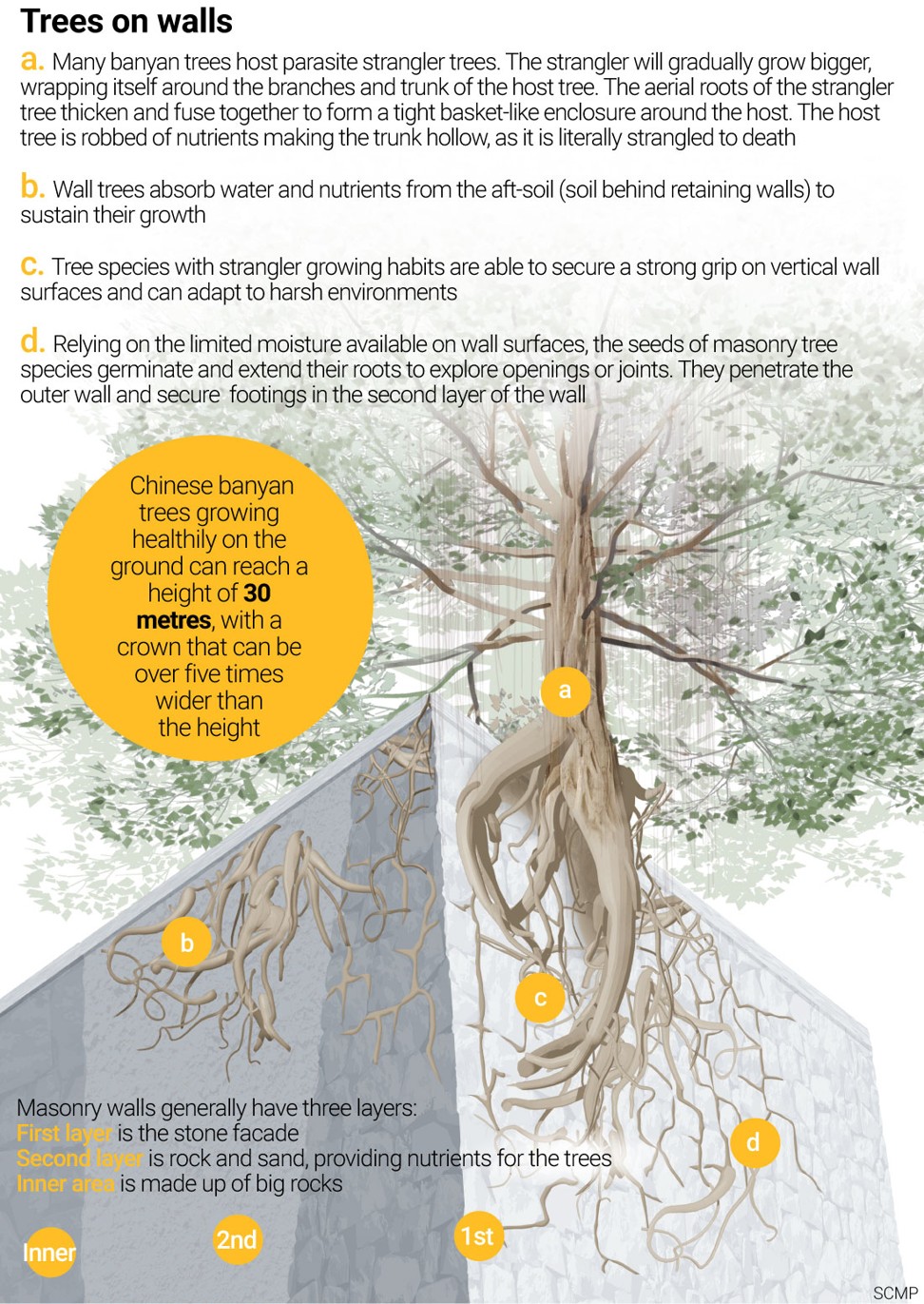
What’s behind the outcry in Hong Kong over the removal of two old banyan trees?
City struggles to find right balance between public safety and tree conservation
The trees were found to be afflicted by rot and fungal infections and at high risk of collapsing. They were cut down in a 12-hour operation last week, drawing anger from arborists, tree conservationists and politicians.
The Lands Department said it had been left with no choice. The situation offers echoes of a controversy in 2015 when four Chinese banyans along the same thoroughfare were hastily axed, also due to public safety.
Here’s what you need to know now.
How does the government manage trees and tree risks?
The Tree Management Office was set up in 2010 to “champion a strategic policy on greening, landscaping and tree management, with a view to achieving sustainable development of a greener environment”. In addition, the office coordinates and steers policy for the nine departments in the city involved in managing trees on their premises or land, and sets guidelines for risk assessment and management.
The office has been criticised for being a “toothless tiger”, unable to make authoritative judgments on, say, whether trees should be removed or preserved. This decision falls to an individual department. Each department is in charge of conducting its own annual tree risk assessment and management (TRAM) plans for trees under its purview.
But advocates of tree conservation argue the government departments have more incentive to take the “easy way out” and remove trees to avoid having to deal with the cost of conserving a tree or taking responsibility in the event of a collapse.
The Ombudsman has lashed out at the government’s fragmented regulatory regime on tree management and slammed the office for its lack of monitoring.

Have things improved since 2015?
The number of individual tree failures increased from 169 in 2015 to 171 in 2016, and then nearly doubled to 343 in 2017. Yet the number of injuries related to tree failures has steadily declined – eleven people in 2015, nine the following year, and seven in 2017.
The number of trees removed for reasons such as construction works, health or structural issues, vegetation maintenance and inclement weather rose slightly to 32,901 in 2017/18, up from 32,211 in 2016/17 and 32,537 in 2015/16. The number of trees removed after annual TRAM exercises climbed from 4,256 in 2015 to 5,650 in 2016 and 5,817 in 2017.
Choosing between people and banyan trees like deciding ‘mother or girlfriend’
Why are Chinese banyans special?
Banyans can come in different species, but what predominates in Hong Kong is the ficus microcarpa, also known in other parts of the world as the small-leaved fig tree. They are an aggressive and invasive species that spread by wild seeding.
They are instantly recognisable by their thick grafted trunks, expansive crowns and aerial roots. These roots can take on timber tissue over time and allow the tree to self-graft, making it appear as if there are several trees in one.
Stone wall trees are a common sight across the city and often get seeded in the gaps of old masonry walls by birds, insects and bats. Most stone wall trees are of the ficus microcarpa species of banyan. As they grow, their roots extend across or through the wall surface to secure their footing and absorb water and nutrients.

Are stone wall trees a public safety issue?
Chinese banyans grow fast and have long life cycles, but the masonry walls they grow on, or out of, were typically never designed to support such vegetation. This makes them susceptible to tree or wall failures. Typhoons or heavy rains can also uproot or peel trees off.
The danger is compounded by the fact that most stone wall trees grow alongside pavements and roads in the city. Collapses can cause harm to people or property.
Stone wall trees that do not grow in proper soil conditions or have adequate room for their roots to spread will also fail to receive the proper nutrients and become weakened.
Could Hong Kong’s 80-year-old banyan trees on Bonham Road have been spared?
At least 15 stone wall trees were taken down between 2016 and May this year due to safety reasons. And at least five more failed on their own.
The Development Bureau is conducting a series of quantitative studies to assess the root safety and anchorage structure of stone wall trees in the hopes of finding a new way to manage them. It may also review current stone wall tree management guidelines.

Why is the topic of tree removal so controversial?
Because many trees are decades, or in some cases, centuries old, communities can develop an affinity or sense of cultural attachment to them. Removal can stir significant public outcry, as in 2015 when the Highways Department took away four century-old stone wall trees along Bonham Road.
According to Development Bureau guidelines, devised in 2013, stone wall trees are considered natural cultural assets requiring “special preservation measures”.
Is there a better way to manage Hong Kong’s iconic, centuries-old stone wall trees?
Activists have urged officials to remove dangerous trees only after all means to “save” them– such as pruning or even propping them up with cables or frames – are exhausted.
Of the 442 trees in Hong Kong deemed “old and valuable” due to their rarity, cultural significance, or exceptional size or form, 19 are afflicted with brown root rot, also known as tree cancer.



